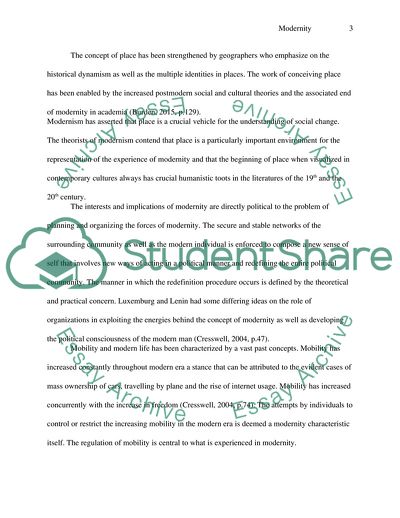Cite this document
(The Condition of Modernity Essay Example | Topics and Well Written Essays - 2000 words, n.d.)
The Condition of Modernity Essay Example | Topics and Well Written Essays - 2000 words. https://studentshare.org/sociology/1878391-the-condition-of-modernity-is-a-condition-of-travelling-and-mobility-consider-this-statement-by-means-of-discussion-of-two-relevant-theorists-cited-in-the-unit
The Condition of Modernity Essay Example | Topics and Well Written Essays - 2000 words. https://studentshare.org/sociology/1878391-the-condition-of-modernity-is-a-condition-of-travelling-and-mobility-consider-this-statement-by-means-of-discussion-of-two-relevant-theorists-cited-in-the-unit
(The Condition of Modernity Essay Example | Topics and Well Written Essays - 2000 Words)
The Condition of Modernity Essay Example | Topics and Well Written Essays - 2000 Words. https://studentshare.org/sociology/1878391-the-condition-of-modernity-is-a-condition-of-travelling-and-mobility-consider-this-statement-by-means-of-discussion-of-two-relevant-theorists-cited-in-the-unit.
The Condition of Modernity Essay Example | Topics and Well Written Essays - 2000 Words. https://studentshare.org/sociology/1878391-the-condition-of-modernity-is-a-condition-of-travelling-and-mobility-consider-this-statement-by-means-of-discussion-of-two-relevant-theorists-cited-in-the-unit.
“The Condition of Modernity Essay Example | Topics and Well Written Essays - 2000 Words”. https://studentshare.org/sociology/1878391-the-condition-of-modernity-is-a-condition-of-travelling-and-mobility-consider-this-statement-by-means-of-discussion-of-two-relevant-theorists-cited-in-the-unit.


